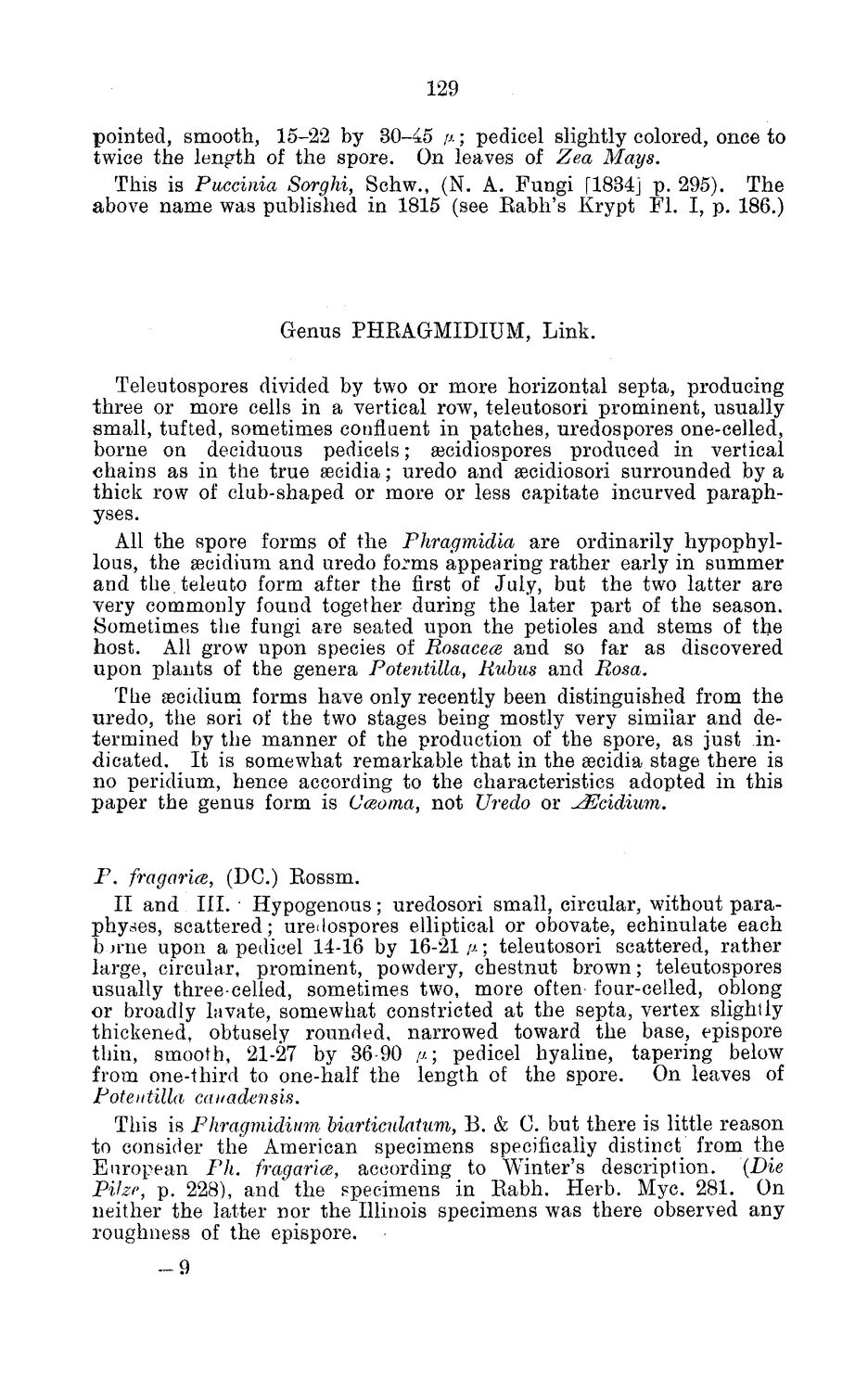| |
| |
Caption: Board of Trustees Minutes - 1884
This is a reduced-resolution page image for fast online browsing.

EXTRACTED TEXT FROM PAGE:
129 pointed, smooth, 15-22 by 30-45 P- ; pedicel slightly colored, once to twice the length of the spore. On leaves of Zea Mays. This is Puccinia Sorghi, Schw., (N. A. Fungi [1834] p. 295). The above name was published in 1815 (see Eabh's Krypt Fl. I, p. 186.) Genus PHEAGMIDIUM, Link. Teleutospores divided by two or more horizontal septa, producing three or more cells in a vertical row, teleutosori prominent, usually small, tufted, sometimes confluent in patches, uredospores one-celled, borne on deciduous pedicels; secidiospores produced in vertical chains as in the true secidia; uredo and secidiosori surrounded by a thick row of club-shaped or more or less capitate incurved paraphyses. All the spore forms of the Phragmidia are ordinarily hypophyllous, the secidium and uredo fo^ms appearing rather early in summer and theteleuto form after the first of July, but the two latter are very commonly found together during the later part of the season. Sometimes the fungi are seated upon the petioles and stems of the host. All grow upon species of Rosacea and so far as discovered upon plants of the genera Potentilla, Rubus and Rosa. The secidium forms have only recently been distinguished from the uredo, the sori of the two stages being mostly very similar and determined by the manner of the production of the spore, as just indicated. It is somewhat remarkable that in the secidia stage there is no peridium, hence according to the characteristics adopted in this paper the genus form is Cceoma, not Uredo or JEcidium. P. fragaricB, (DO.) Eossm. II and III. ' Hypogenous; uredosori small, circular, without paraphy^es, scattered; uredospores elliptical or obovate, echinulate each b >rne upon a pedicel 14-16 by 16-21 ,u; teleutosori scattered, rather large, circular, prominent, powdery, chestnut brown; teleutospores usually three-celled, sometimes two, more often four-celled, oblong or broadly lavate, somewhat constricted at the septa, vertex slightly thickened, obtusely rounded, narrowed toward the base, epispore thin, smooth, 21-27 by 36-90 /./; pedicel hyaline, tapering below from one-third to one-half the length of the spore. On leaves of Potentilla canadensis. This is Phragmidium biarticulatum, B. & 0. but there is little reason to consider the American specimens specifically distinct from the European Ph. fragarice, according to Winter's description. (Die Piter, p. 228), and^ the specimens in Eabh. Herb. Myc. 281. On neither the latter nor the Illinois specimens was there observed any roughness of the epispore. -9
| |